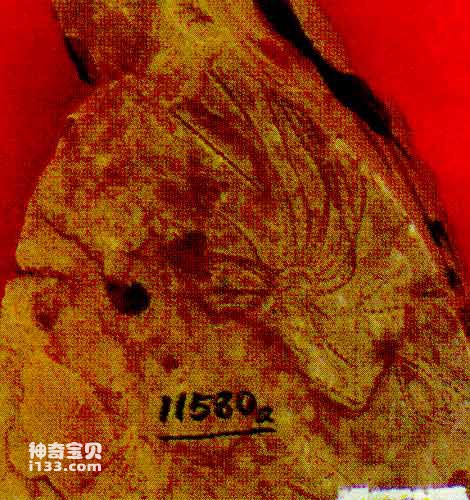Hemichordates are also called "cryptozoans" and they all live in the ocean. Their most striking feature is a nerve cord located on their back and a short blind tube called an "oral cord" extending forward from the back of their mouth. Some scientists believe that this dorsal nerve cord is the rudiment of the dorsal neural tube of chordates that later appeared, while the oral chord is the rudiment of the notochord or anterior pituitary gland of chordates. Apparently, hemichordates are a transitional type between non-chordates and chordates.

graptolite
Hemichordates include 4 classes, namely Enterobranchia, Pinnabranchia, Flotococcus and Graptolites. Among them, Enterobranchia are all modern animals with no fossil record; Pinnabranchia appeared in the Ordovician and continue to this day; Floctobranchia is a very small group of modern animals. The total number of species in these three classes is only over 50. Graptolites are the most abundant group in type and quantity among the Hemichordates. However, they are all ancient organisms. They first appeared in the middle Cambrian period and were all extinct by the early Carboniferous period more than 300 million years ago. .
Fossils of graptolite animals are usually preserved as flattened carbon films, which are very similar to the traces of pencils written on the rock layer, so they are called "graptolites" by scientists. They are generally divided into 6 orders: dendritic graptoliths, tube graptoliths, cavity graptoliths, stem graptoliths, shell graptoliths and orthograptolites.
Based on the state of fossil preservation, the types of symbionts, and the skeletal structure of the graptolites themselves, scientists speculate that some graptolites live sedentary lives in seabed camps, such as most tree-shaped graptolites, which have fixed stems, roots, etc. Structure; other graptolite animals live a floating life, such as orthograptolites. They have filaments called "line tubes" that are used to attach to floating bodies.
Graptolites can live in symbiosis with fossils of animals such as brachiopods and trilobites. But there are also some specific environments where there are only floating graptolites without other organisms or only very few plankton accompanying them.
Graptolites are usually preserved in black shale. The reason may be that the seawater in the depositional environment at that time was relatively calm, the seabed had strong reduction, insufficient oxygen, and contained more hydrogen sulfide, which was not suitable for benthic organisms to survive. However, in such a Graptolites that live a floating life in the environment can live in surface water bodies, and after death, their bodies sink to the bottom of the water and become fossils; another reason may be that when graptolites float from normal water bodies into such unsuitable water bodies, , they died in large numbers and sank to the bottom of the sea. However, there were few benthic animals on the bottom of the sea. These graptolite corpses were not "destroyed", so they were preserved in large numbers and turned into fossils.
In addition to shale, some graptolite fossils can also be found in fine sandstone, siltstone or limestone
animal tags: graptolite
We created this article in conjunction with AI technology, then made sure it was fact-checked and edited by a Animals Top editor.